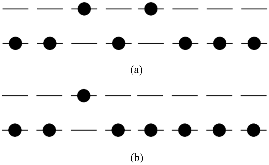On the difference between variational and unitary coupled cluster theories
- Rice Univ., Houston, TX (United States). Dept. of Physics and Astronomy
- Northwestern Univ., Evanston, IL (United States). Dept. of Chemistry
- Rice Univ., Houston, TX (United States). Dept. of Physics and Astronomy, and Dept. of Chemistry
There have been assertions in the literature that the variational and unitary forms of coupled cluster theory lead to the same energy functional. Numerical evidence from previous authors was inconsistent with this claim, yet the small energy differences found between the two methods and the relatively large number of variational parameters precluded an unequivocal conclusion. Using the Lipkin Hamiltonian, we here present conclusive numerical evidence that the two theories yield different energies. The ambiguities arising from the size of the cluster parameter space are absent in the Lipkin model, particularly when truncating to double excitations. We show that in the symmetry adapted basis under strong correlation, the differences between the variational and unitary models are large, whereas they yield quite similar energies in the weakly correlated regime previously explored. We also provide a qualitative argument rationalizing why these two models cannot be the same. Additionally, we study a generalized non-unitary and non-hermitian variant that contains excitation, de-excitation, and mixed operators with different amplitudes and show that it works best when compared to the traditional, variational, unitary, and extended forms of coupled cluster doubles theories
- Research Organization:
- Rice Univ., Houston, TX (United States)
- Sponsoring Organization:
- USDOE Office of Science (SC), Basic Energy Sciences (BES)
- Grant/Contract Number:
- SC0001474; FG02-09ER16053
- OSTI ID:
- 1512944
- Alternate ID(s):
- OSTI ID: 1417782
- Journal Information:
- Journal of Chemical Physics, Vol. 148, Issue 4; ISSN 0021-9606
- Publisher:
- American Institute of Physics (AIP)Copyright Statement
- Country of Publication:
- United States
- Language:
- English
Web of Science
Similar Records
Downfolding of many-body Hamiltonians using active-space models: Extension of the sub-system embedding sub-algebras approach to unitary coupled cluster formalisms
Quantum Simulation of Molecular Electronic States with a Transcorrelated Hamiltonian: Higher Accuracy with Fewer Qubits



